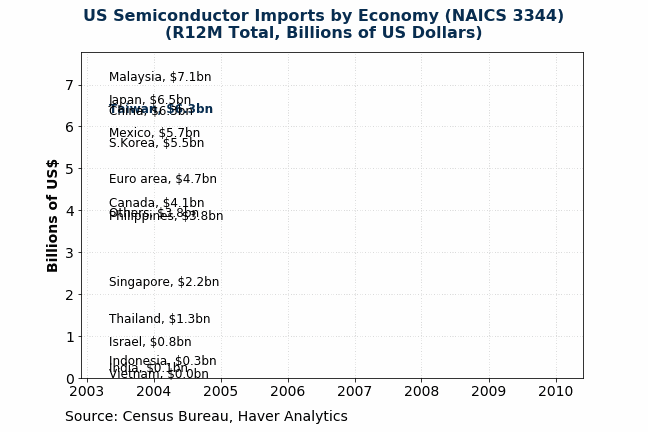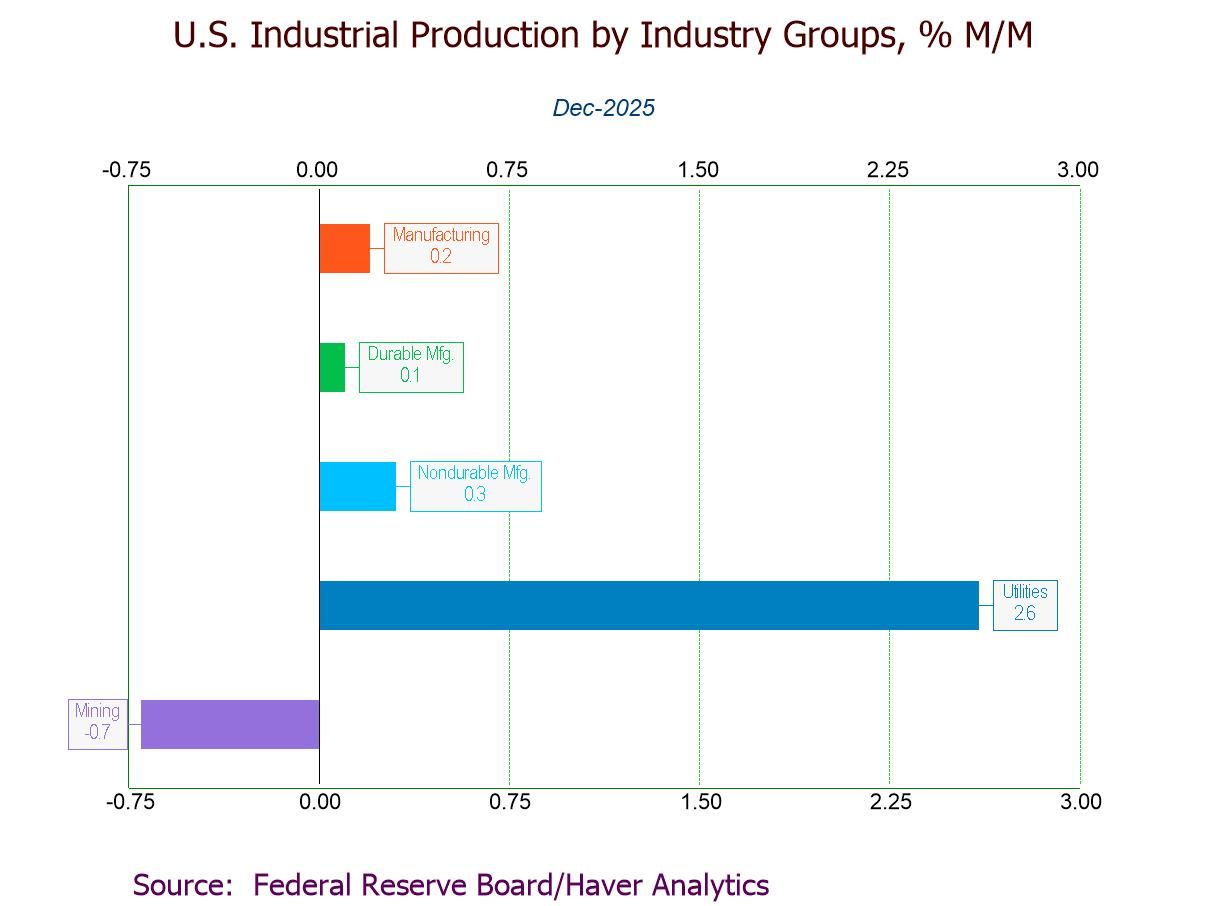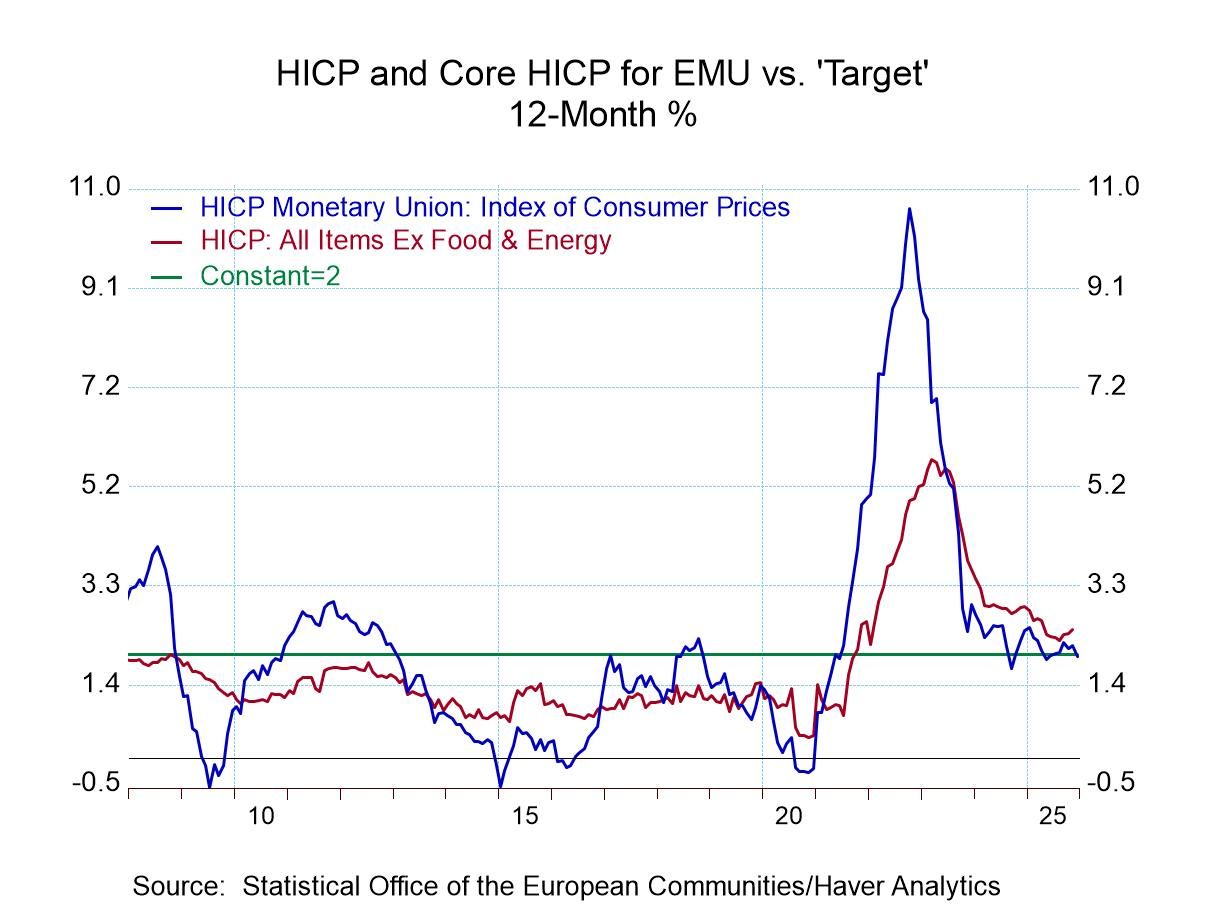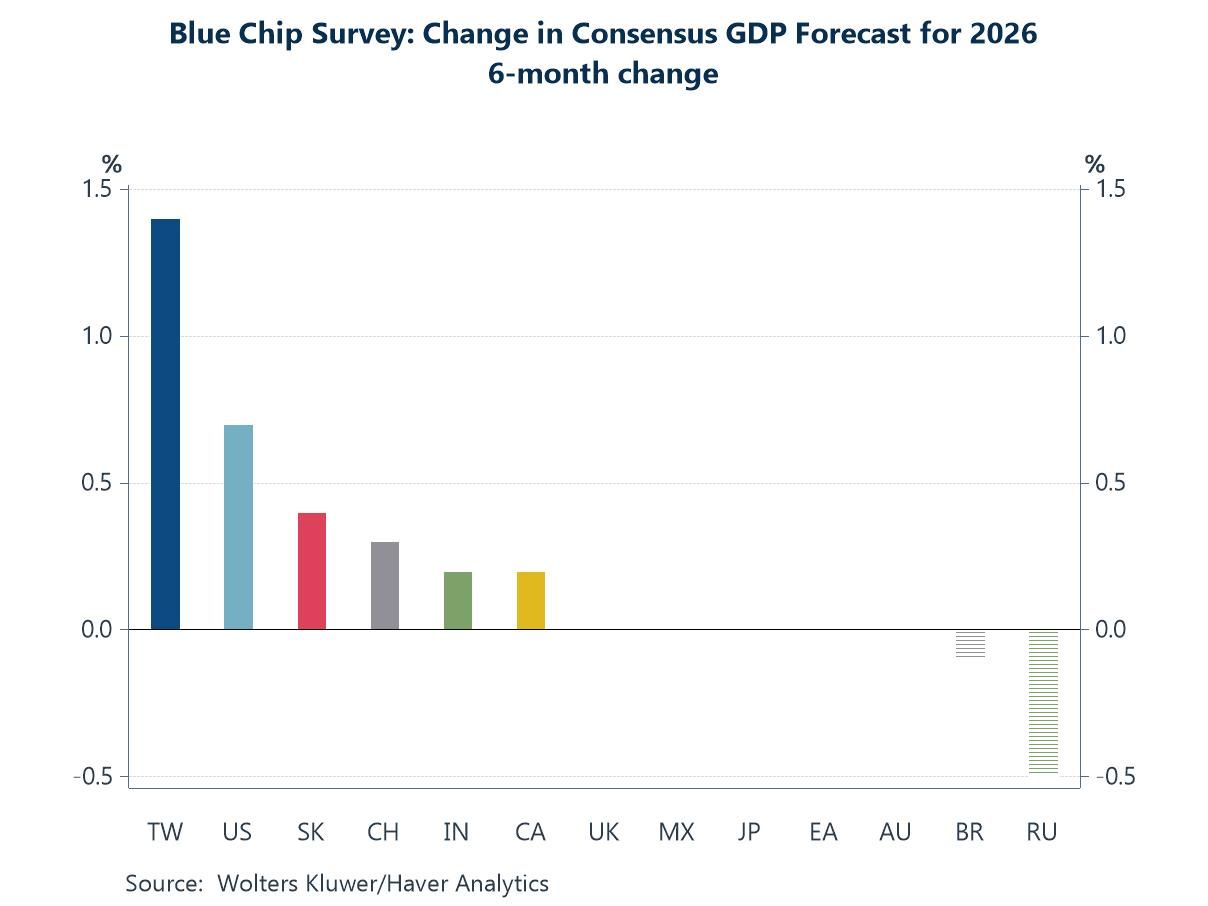Initial claims for unemployment insurance fell
to 340,000 (-7.4% y/y) during the week ended October 26 from an unrevised
350,000 during the prior week. The Labor Department indicated that no
claims were due to a processing difficulties in California. For last week,
the Action Economics Forecast Survey expected 340,000 claims. The
four-week moving average of initial claims increased to 356,250, its
highest level since late-May. During the last ten years there has been a
74% correlation between the level of claims and the m/m change in payroll
employment.
Continuing claims for unemployment insurance in the week ended October
19 rose to 2.881 million (-11.3% y/y). The figure remained up from the
early-September low of 2.788 million. The four-week moving average of
continuing claims slipped to 2.879 million. The insured rate of
unemployment remained at 2.2%, where it's been since late-August. This
particular count covers only "regular" programs and does not
include all extended benefit and other specialized jobless insurance
programs. In the week of October 12, the latest figure available, the
total of all benefit recipients increased slightly to 3.896 million (-22.6%
y/y). This broader measure is not seasonally adjusted. It compares to a
cycle peak of 12.060 million in January 2010 and pre-recession figures
that averaged 2.596 million for 2007. The number of individuals collecting
emergency and extended payments in the week of October 12 fell to 1.318
million (-37.2% y/y), a new low for the economic recovery. By state, the insured rate of unemployment continued to vary greatly
with South Dakota (0.36%), Virginia (1.13%), Florida (1.19%), Tennessee
(1.28%), Indiana (1.37%), Georgia (1.42%) and Texas (1.42%) at the low end
of the range. At the high end were Massachusetts (1.96%), Wisconsin (2.07%),
Illinois (2.34%), Pennsylvania (2.55%), California (2.70%), New Jersey (2.92%)
and Alaska (3.86%). Data on weekly unemployment insurance are contained in Haver's WEEKLY
database and they are summarized monthly in USECON. Data for
individual states are in REGIONW. The consensus estimates come from
the Action Economics survey, carried in the AS1REPNA database.
Unemployment Insurance (000s)
10/26/13
10/19/13
10/12/13
Y/Y %
2012
2011
2010
Initial Claims
340
350
362
-7.4
375
409
459
Continuing Claims
--
2,881
2,850
-11.3
3,318
3,744
4,544
Insured Unemployment Rate (%)
--
2.2
2.2
2.5
(10/12)2.6
3.0
3.6
Total "All Programs"
(NSA)
--
--
3.896 mil.
-22.6
6.047 mil.
7.750 mil.
9.850 mil.
 Global| Oct 31 2013
Global| Oct 31 2013U.S. Initial Unemployment Insurance Filings Slip
by:Tom Moeller
|in:Economy in Brief
Summary
Initial claims for unemployment insurance fell to 340,000 (-7.4% y/y) during the week ended October 26 from an unrevised 350,000 during the prior week. The Labor Department indicated that no claims were due to a processing [...]
by Tom Moeller October 31, 2013
Factory sector activity in the Midwest region heated
up this month. The MNI Chicago Report
business barometer jumped to 65.9, its highest level since March of 2011.
Expectations in the Action Economics Forecast Survey were for 55.0. Haver
Analytics constructs a seasonally adjusted figure comparable to the MNI
Barometer and it rose to 60.7, its highest level since November 2011.
During the last ten years there has been an 66% correlation between the
adjusted Chicago index the quarterly change in real GDP.
Improvement in the components during September was broad-based. led by
production, new orders and a slower pace of vendor deliveries. Working the
other way, the employment index fell to its lowest level since April.
During the last ten years there has been an 80% correlation between the
employment index and the m/m change in factory sector payrolls. Pricing power also deteriorated as the prices index reversed its
increases of the prior two months. During the last ten years there has
been a 67% correlation between the prices paid index and three-month
growth in the intermediate goods PPI. The survey panel consists of 200 manufacturing purchasing professionals
in the Chicago area. The MNI figures are copyrighted by the MNI Chicago
Report in partnership with the Institute for Supply Management-Chicago.
The figures from the survey can be found in Haver's SURVEYS
database. The Consensus expectations figure is available in AS1REPNA.
MNI Chicago Report
(Diff. Index, 50=No Chg.)
Oct
Sep
Aug
Oct'12
2012
2011
2010
ISM-Adjusted Business Barometer
60.7
54.0
52.2
51.2
54.8
61.3
59.0
Business Barometer
65.9
55.7
53.0
50.7
54.6
62.7
61.3
New Orders
74.3
58.9
57.2
50.6
55.1
65.3
63.4
Production
71.1
58.0
53.0
53.6
57.5
66.5
65.0
Order Backlogs
61.0
46.7
46.5
45.6
48.0
55.5
54.5
Deliveries
52.3
53.7
50.8
51.0
54.8
60.0
61.0
Inventories
48.0
46.0
45.0
49.6
51.4
55.2
50.5
Employment
57.7
53.2
54.9
51.1
55.3
59.4
55.2
Prices Paid
56.7
57.1
65.2
60.8
62.2
72.4
65.3
Tom Moeller
AuthorMore in Author Profile »Prior to joining Haver Analytics in 2000, Mr. Moeller worked as the Economist at Chancellor Capital Management from 1985 to 1999. There, he developed comprehensive economic forecasts and interpreted economic data for equity and fixed income portfolio managers. Also at Chancellor, Mr. Moeller worked as an equity analyst and was responsible for researching and rating companies in the economically sensitive automobile and housing industries for investment in Chancellor’s equity portfolio. Prior to joining Chancellor, Mr. Moeller was an Economist at Citibank from 1979 to 1984. He also analyzed pricing behavior in the metals industry for the Council on Wage and Price Stability in Washington, D.C. In 1999, Mr. Moeller received the award for most accurate forecast from the Forecasters' Club of New York. From 1990 to 1992 he was President of the New York Association for Business Economists. Mr. Moeller earned an M.B.A. in Finance from Fordham University, where he graduated in 1987. He holds a Bachelor of Arts in Economics from George Washington University.






